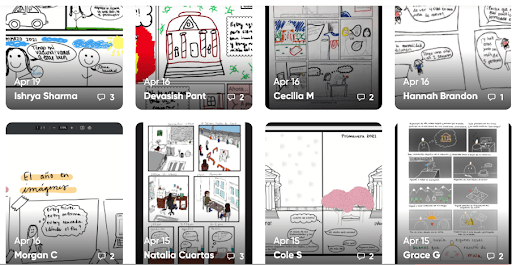Drive-Thru Pedagogy Blog
Pick up something practical.
Keeping up with Social Changes in Second Language Acquisition
March 7, 2022 • By Nicole Bonino and Stella Mattioli
Despite the existence of excellent study abroad programs, traveling to another country is a privilege, at times, unaffordable. Consequently, the classroom becomes the only space for students to be exposed to socio-cultural issues. Nevertheless, traditional learning materials and pedagogical approaches in the field of Second Language Acquisition (SLA) often struggle to reflect the latest changes of the target culture in terms of diversity, equity, and inclusion (DEI).
We developed an acronym – M.A.G.I.C. – that captures five simple steps to create an inclusive learning environment for your SLA students. The following sample activities helped students reflect on contemporary socio-cultural complexities related to migratory, racial, and gender issues.
So, to get practical, how can we integrate diversity into the fabric of our classroom?
With a touch of M.A.G.I.C.:
1. M (Use a multimedia approach).
Contextualize students’ learning experience by designing activities that balance content and skills through a variety of print media (e.g., graphic novels, short stories, news articles); visual performances; documentaries; artworks; and social media!
2. A (don’t assume).
Never assume when teaching a second language in an inclusive way. Consider the “situational factors”— outside elements influencing learners. Think about your audience and ask questions like: Who am I teaching? What’s their background? What is their awareness of socio-cultural dynamics?
3. G (define your goals).
Only after defining your goals should you develop assignments, assessments, and evaluation criteria. Check the principles behind this planning approach known as “Backward Design”.
4. I (get informed).
Sometimes, we feel lost and lonely in our pedagogical journey. Look around and ask: Are there any seminars or workshops focused on DEI I can attend? Any centers, societies, or pedagogical associations that can support my research? Consider another important situational factor, your departmental context, and ask: are there any colleagues in my department who can help me design inclusive assignments and integrate new practices?
5. C (care and make students care).
The American Council on the Teaching of Foreign Language developed World-Readiness Standards for Learning Languages, a list of 5 Cs (Communication, Cultures, Comparisons, Connections, Communities) that can help students successfully communicate in a second language. Students learn best when they create connections between their personal experiences and the course content.
To help you put these ideas into practice, here are some strategies based on authentic materials:
Listening:
1. Ask your students to interview members of the community via online platforms or in person;
2. Add to your syllabus a list of groundbreaking recent movies produced in the target language;
3. Create a music playlist that students can follow and allow them to add songs on their own.
Reading:
1. Curate a database of newspapers to facilitate the process of selecting a resource —a task that can be overwhelming for language learners—and ask students to find articles of interest and summarize them;
2. Introduce social platforms and invite your students to follow accounts, read, and write in the target language.
Writing:
1. Offer your students the opportunity to design an e-portfolio;
2. Suggest students reflect and write about diversity by drawing comic strips via online platforms.
Speaking:
1. Create role-plays and ice-breaker activities with simple conversational questions that can be answered in pairs or groups;
2. Invite guest speakers, such as artists and activists, to talk to your students about their experiences; ask students to reflect on their narratives and record their comments.
Behind any sleight of hand, there is a magic trick that can be learned and shared. Now it’s up to you. Get inspired, get informed, define your goals, and provide students with updated, authentic, and inclusive materials that will motivate them to become aware and respectful global citizens.

Comic strips designed by students as homework assignments to reflect on the ways Covid-19 affected their life and society.
© 2022 Nicole Bonino and Stella Mattioli. The text of this work is licensed under a Creative Commons BY-NC-ND 4.0 International License.
Meet the Authors
Nicole Bonino, Ph.D.
Latin-Americanist Scholar
Nicole Bonino (Ph.D., University of Virginia) is currently a Visiting Research Scholar at the Institute of Latin American Studies at Columbia University. She specializes in Latin American migratory literature and visual arts. She has taught Spanish and Italian languages, as well as Latin American migratory literature.
View Nicole’s Academia Profile

Stella Mattioli, M.A.
Lecturer of Italian
Stella Mattioli (M.A., University of Virginia) is currently a faculty member and Lecturer of Italian in the Department of Spanish, Italian, and Portuguese at the University of Virginia. In her SLA classes, she experiments with e-portfolios, OER, and activities aimed at promoting awareness about diversity issues affecting Italian society.
